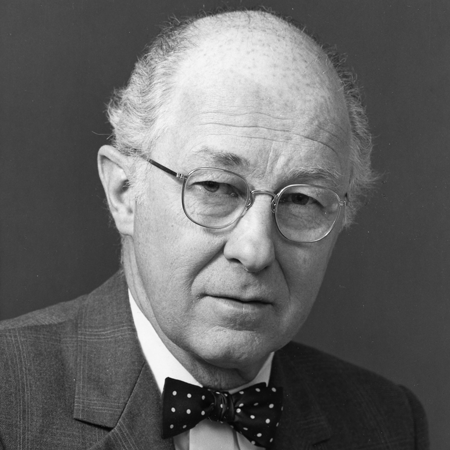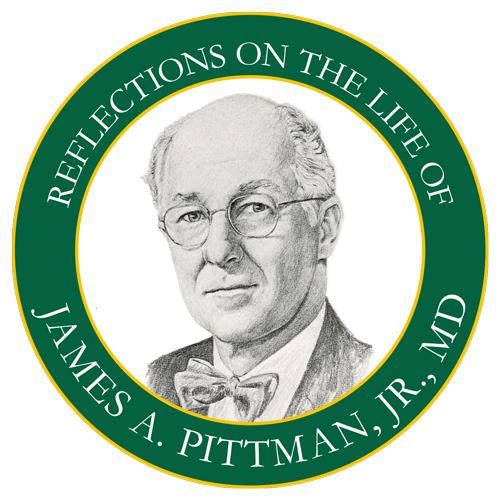 During World War II, one of the great primary training planes for the Army Air Corps was the Stearman PT13D “Kaydet,” which was an open-cockpit biplane. It was a “tail-dragger,” meaning that it did not have “tricycle” landing gear.
During World War II, one of the great primary training planes for the Army Air Corps was the Stearman PT13D “Kaydet,” which was an open-cockpit biplane. It was a “tail-dragger,” meaning that it did not have “tricycle” landing gear.
Most of these plans that were manufactured were used for the early training of all air cadets. When the war ended, most of those training planes were still in the United States or Canada, as compared to most of the combat planes that remained overseas, and never did return to this country. Many of the Stearmans were converted to crop dusters, or sold to interested individuals or aircraft dealers. They were slow-flying but stable in flight, were easy to land, and did not require a large airport for operation. A farmer could easily fly out of his hay field, and could “hangar” a Stearman in his barn. Many were bought by pilots who enjoyed “sport aviation,” just for the love of flying. This category of pilot did not use a Stearman for fast transportation, or for long cross-country flights. Flights of 25 to 50 miles to neighboring airports was not uncommon, where conversation with other pilots and seeing other airplanes added to the sport flyers interests.
Jim Pittman was one of those “sport” pilots, who flew on weekends just for the fun and relaxation of flying. For long trips or business flying, he used regular commercial flights. It is probable that one must be a pilot himself to understand that way of thinking. (Many commercial and airline pilots have a personal sport plane for their own off-duty pleasure-flying and relaxation.) Jim’s personal plane was a Stearman “Kaydet”, which he kept in a hangar at St. Clair County Airport in Pell City, outside Birmingham. His personal flying was slow, local, and only in good weather with favorable winds. In order to emphasize the importance of the term “favorable winds,” the non-pilot reader should be informed at this time of a technical fact with relationship to the “tail-dragger” aircraft: If you visualize the side view of any airplane, you can see that it is actually the same configuration as a weathervane; and the wind forces on the aircraft are the same as a weathervane. Therefore, landing or taking off in a taildragger in a crosswind requires special training, experience and vigilance. Otherwise, the aircraft will “swing with the wind,” causing what is known as a “ground-loop” accident.
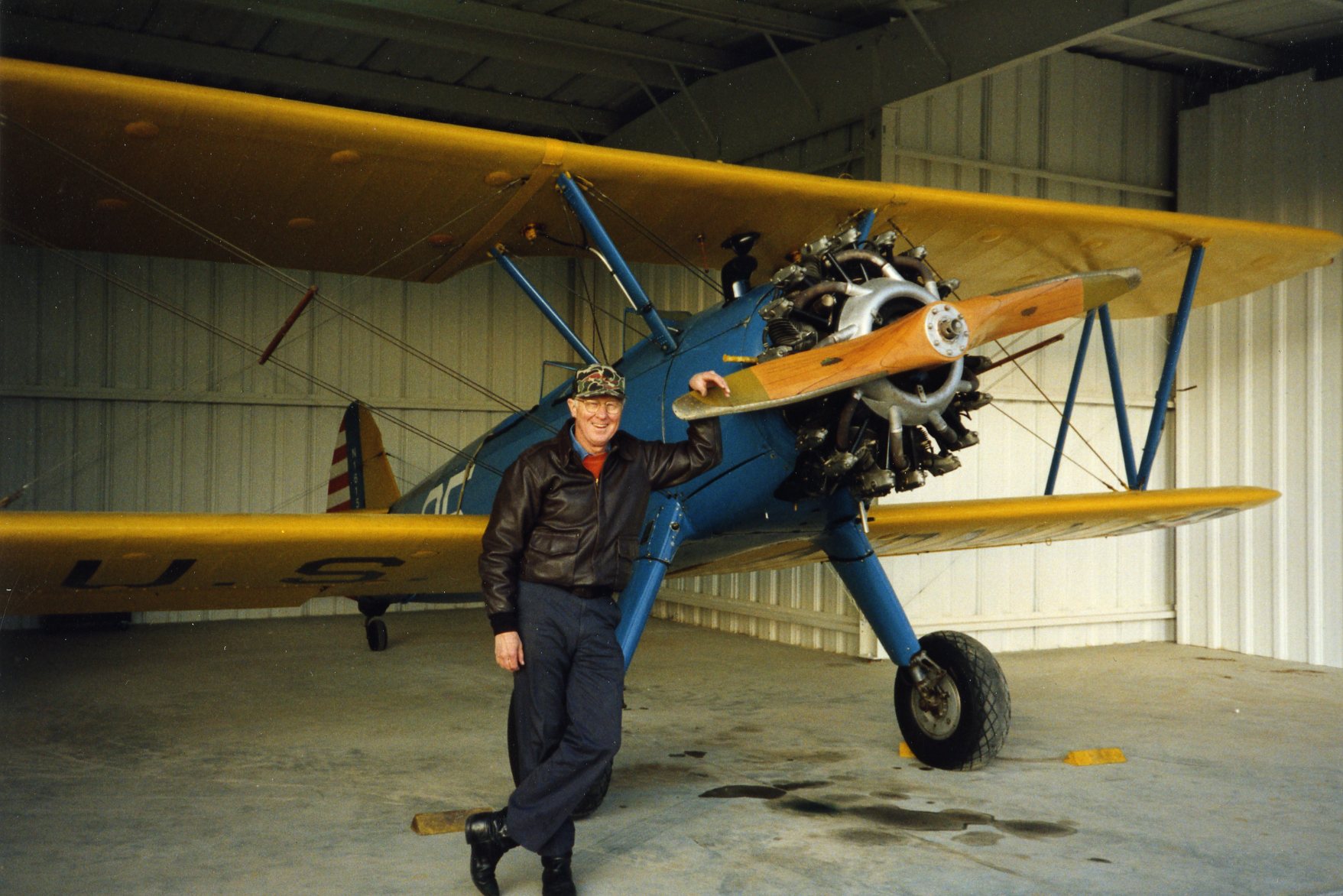 This bit of technical discussion is offered here in order to emphasize the fact that Jim Pittman required a considerable amount of knowledge and skill to consistently fly a Stearman safely. Part of the fun of his flying was the constant challenge of landing correctly and safely; because one thing that all pilots agree on is that every landing is different. Landing “into the wind” is the ideal sought by all.
This bit of technical discussion is offered here in order to emphasize the fact that Jim Pittman required a considerable amount of knowledge and skill to consistently fly a Stearman safely. Part of the fun of his flying was the constant challenge of landing correctly and safely; because one thing that all pilots agree on is that every landing is different. Landing “into the wind” is the ideal sought by all.
It is hoped that the foregoing discussion has served to introduce the reader to Jim Pittman, as a good and experienced pilot, as well as to the type or aircraft that he flew and loved, and the type of private flying that he did. Jim and I were the same age and were both physicians, with parallel educational backgrounds, but were never associated together in educational or professional work. We were personal friends, so we were always relaxed in each other’s presence.
Having said that, this is a little story that has always made me smile. My airplane at that time was a Pitts Special, which as a “hot” little show-plane with a single cockpit. His Stearman was a slow, lumbering two-cockpit training plane. He was intrigued by the possibility that he could “get on my tail.” That was the maneuver that World War I and World War II pilots used in a dogfight. The purpose was to be able to out-maneuver your adversary with speed or aerobatics to be able to pull up behind him where he could neither see you or shoot at you, and you would then be able to shoot him down. So Jim challenged me. He said he could “out-turn” me and outmaneuver me, and “stay on my tail.” I accepted the challenge, and up we went.
It was no contest. My fast, little nimble plane could get behind him every time, and he never managed to get behind me. Needless to say, Jim never mentioned it again, nor did I. I did fly with him as just a passenger at times. He loved to take other people for rides, whether other pilots or just friends.
Jim joined the Birmingham Aero Club, enjoying meetings and activities as his professional schedule allowed. Much of the money that was used to build the Southern Museum of Flight came from profits made at annual air shows organized and managed by the Birmingham Aero Club. The shows were conducted at the Bessemer Airport and the Shelby County Airport. Aero club members who owned airplanes took paying passengers up for rides, with the money going to the club. Most of the airplanes used were standard, state-of-the art private passenger planes, but Jim’s Stearman was special. It had two open cockpits and two wings, just like the type that had been popularized by “Snoopy and The Red Baron.” Many people, including pilots, were anxious to fly in that airplane; and veterans of the military wanted their children or grandchildren to have the experience of flying in a plane like they had flown during the war. For many years, Jim took great pleasure in volunteering himself and his Stearman to delight these special passengers; and he was simultaneously adding to the funds needed for the growth and maintenance of the Southern Museum of Flight. The large majority of these passengers never guessed that their pilot was the dean of the School of Medicine, and that he was the owner and pilot of an airplane that was more than 50 years old.
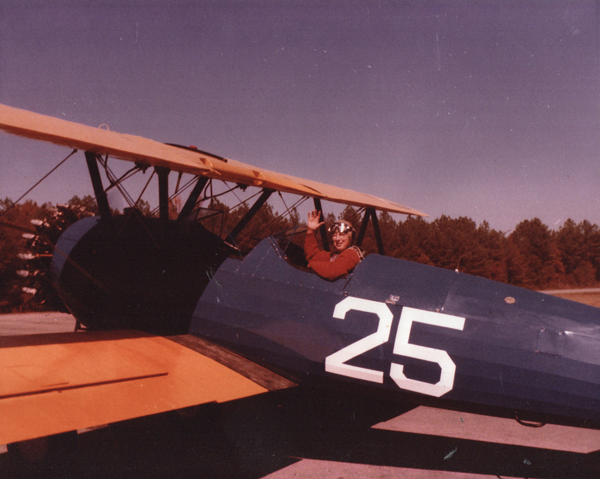 The Southern Museum of Flight was founded at the time of the celebration of Birmingham’s 100th anniversary in 1971. The Birmingham Committee of 100 selected Mary Alice Beatty to research and present Birmingham’s contributions to aviation. As a result of that work, she established a small museum of aviation artifacts, originally located at Samford University. Over time, that museum grew into The Southern Museum of Flight. Mrs. Beatty had a lifetime experience in aviation, working with her husband, Donald Croom Beatty, in establishing major airline routes in Central and South America. Both she and her husband were honored with individual inductions into The Alabama Aviation Hall of Fame, the only husband and wife team to be so honored. Her love of flying lasted throughout her life. As an octogenarian, she was thrilled to have her last airplane flight in Jim Pittman’s Stearman, with Jim as the very proud pilot.
The Southern Museum of Flight was founded at the time of the celebration of Birmingham’s 100th anniversary in 1971. The Birmingham Committee of 100 selected Mary Alice Beatty to research and present Birmingham’s contributions to aviation. As a result of that work, she established a small museum of aviation artifacts, originally located at Samford University. Over time, that museum grew into The Southern Museum of Flight. Mrs. Beatty had a lifetime experience in aviation, working with her husband, Donald Croom Beatty, in establishing major airline routes in Central and South America. Both she and her husband were honored with individual inductions into The Alabama Aviation Hall of Fame, the only husband and wife team to be so honored. Her love of flying lasted throughout her life. As an octogenarian, she was thrilled to have her last airplane flight in Jim Pittman’s Stearman, with Jim as the very proud pilot.
Sport pilots find about as much of their pleasure in talking about flying as they do in the actual flying. With the high price of aviation fuel in the past few years, it seems that some days there is more talking than flying. Most small airports have a bench out in front of the office, but also have lounge areas inside for bad weather talking. Some “disrespectful” people have spoken of the weekend crowd on the bench as “the Flyers and Liars Club.” However, not only are pilots and fellow-travelers, who are sitting on the bench, telling of their own or other people’s flying experiences, mishaps, mistakes or crashes, but they also observe and judge and criticize landings by other pilots which can be observed on the runway in front of them. Therefore, the bench crowd are great teachers. For those who will listen, many lessons are learned about flying -- lessons that are missed by the pilots who are too busy or too haughty to sit a while. To clarify any misunderstandings, the “bench crowd” are usually not a bunch of “redneck roughnecks and loafers,” but generally were composed of successful professional and business people, who could afford to own such “boy-toys” such as airplanes.
My personal experience makes me believe that three of my friends died in their plane crashes because they never stopped long enough to “sit on the bench and listen.” They could have learned things not taught in flight school. Jim, on the other hand, with all of his degrees and accolades, was always “one of the ‘fellers’ ” who would join in the educational meeting on the bench. After his stroke, he could no longer fly as a pilot, and could only walk with great difficulty, but he was brought out to the airport nearly every Saturday by a good friend for conversation on the bench or in the lounge, and for lunch.
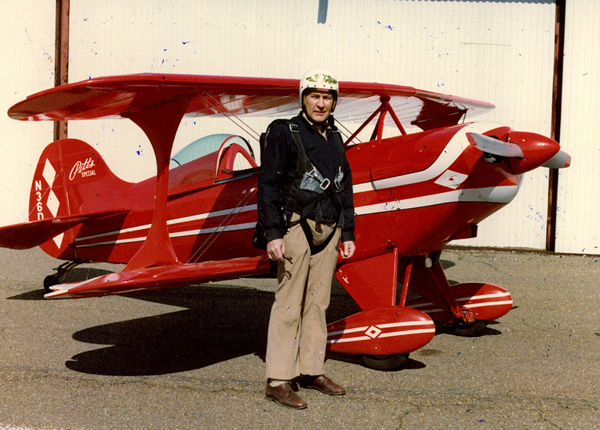 Dr. StevensonAt least once after his stroke, he was physically helped into the open passenger cockpit of his Stearman, and took a flight piloted by one of his two sons, John.
Dr. StevensonAt least once after his stroke, he was physically helped into the open passenger cockpit of his Stearman, and took a flight piloted by one of his two sons, John.
Jim’s other son, Clinton, took flight lessons and soloed, but elected to forego further flying as a pilot, and was never licensed. John, on the other hand, has gone through all of the required training and licensing, and continues to fly the family Stearman, which is still hangared at Pell City.
Though his association with pilots and aircraft owners at the airports, as well as membership in the Birmingham Aero Club, and attendance of events at The Southern Museum of Flight, Jim met a great variety of people with varied interests in aviation. These friendships resulted in opportunities for Jim to extend kindnesses which were never known to most of his friends or the public. One of these people was the widow of a corporate executive who was a sport pilot. They had no children, and had moved to Birmingham a few years earlier from another state. She developed a terminal illness before the days of hospice care. Jim quietly and voluntarily assumed the role of her private physician, without compensation, and made regular house calls, furnishing her with sedatives, narcotics and kindness to ease the suffering of her last days. She gratefully donated her body to the medical school for the education of medical students.
Another such “patient” was a local aviation celebrity, Nancy Batson Crewes. During World War II, Nancy was a member of the first group of female pilots that were used by the Army Air Corps to ferry new airplanes from the factories to the air bases. They were known as the WAFS (Women’s Auxiliary Ferrying Squadron), which later was folded into the WASPS (Women Airforce Service Pilots). Nancy was a Birmingham native, and many details of her career can be found in Wikipedia. In later life she moved back home to Alabama and made her home in Moody. She resumed her aviation activities, was a member of the Birmingham Aero Club, and worked part-time as a corporate co-pilot. She was inducted into the Alabama Aviation Hall of Fame and The Alabama Women’s Hall of Fame. She was a frequent visitor to the St. Clair County Airport, and was a friend of everyone she met. Jim and Nancy became good friends during those years. Unexpectedly, non-smoker Nancy developed carcinoma of the lung, which proved fatal in spite of the best of treatment. She had a slow decline in health and activities, but spent the rest of her life in her home in Moody. During that time, Jim assumed the role of her primary physician, making regular and frequent house calls without charge. He supplied her with such medications, advice, encouragement and adjunctive treatment as was appropriate until she died. Jim and I had the great honor of being asked to be pallbearers at her funeral.
So James A, Pittman, Jr., was sometimes the airplane pilot, but always the physician and always a friend. Having known him as a friend and fellow-pilot has been one of my life’s greatest privileges and pleasures.
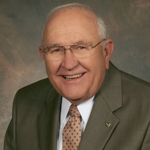 Edward W. Stevenson, MD, is retired from private practice in otolaryngology and head and neck surgery in Birmingham. His past positions included Medical Officer, U.S. Navy; Instructor, Tulane Medical School; Clinical Assistant Professor, UAB School of Medicine, and private practice in Decatur, Ala. He received the MD degree from the University of Maryland School of Medicine, followed by internship at Baptist Memorial Hospital in Memphis; otolaryngology residency at the Medical College of Virginia; and head and neck surgery fellowship at Ochsner Foundation Hospital in New Orleans.
Edward W. Stevenson, MD, is retired from private practice in otolaryngology and head and neck surgery in Birmingham. His past positions included Medical Officer, U.S. Navy; Instructor, Tulane Medical School; Clinical Assistant Professor, UAB School of Medicine, and private practice in Decatur, Ala. He received the MD degree from the University of Maryland School of Medicine, followed by internship at Baptist Memorial Hospital in Memphis; otolaryngology residency at the Medical College of Virginia; and head and neck surgery fellowship at Ochsner Foundation Hospital in New Orleans.